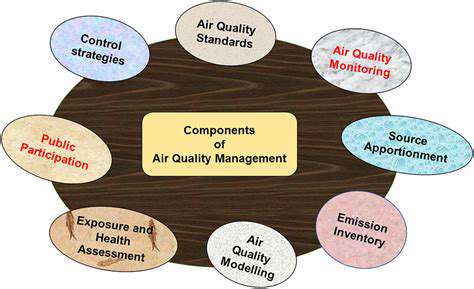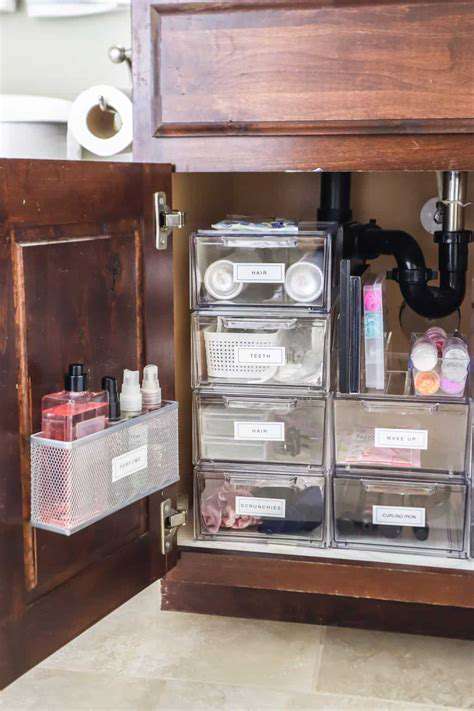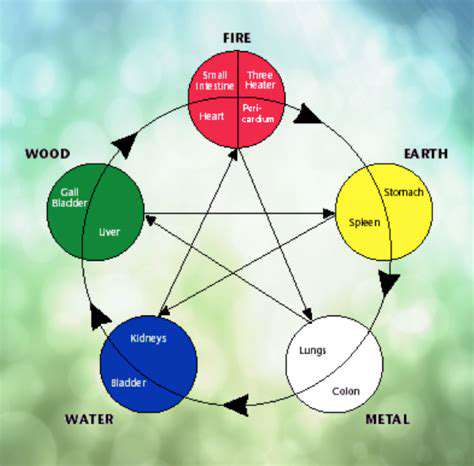Creating a space that boosts your immune system
Improving Air Quality for Enhanced Well-being
When we think about our indoor spaces, we often focus on aesthetics, but the quality of the air we breathe plays an equally vital role in our daily lives. Poor indoor air quality doesn't just cause temporary discomfort - it can lead to lasting health consequences, particularly for those with respiratory conditions. The invisible threats lurking in our homes - from dust mites to chemical off-gassing from furniture - require our attention and action.
Practical solutions exist for improving your home's air quality. Opening windows regularly creates natural airflow, while investing in high-quality air filters for your HVAC system can trap harmful particles. Don't overlook simple maintenance - changing filters monthly and having ducts cleaned annually makes a significant difference. For those particularly sensitive to air quality, standalone HEPA air purifiers offer targeted protection in frequently used spaces.
Utilizing Natural Light and Greenery
Sunlight does more than just illuminate our spaces - it regulates our circadian rhythms and boosts vitamin D production. The psychological benefits of natural light are well-documented, with studies showing improved mood and productivity in well-lit environments. When designing your space, consider how window placement affects light distribution throughout the day.
Indoor plants serve dual purposes - they purify air while adding life to your decor. Certain varieties like snake plants and peace lilies are particularly effective at removing common household toxins. Remember that plant care matters - overwatering can lead to mold growth, counteracting the air-purifying benefits. Choose plants that match both your aesthetic preferences and maintenance capabilities.
Maintaining Proper Temperature and Humidity
Comfort extends beyond furniture - it's about creating the right atmospheric conditions. Temperature fluctuations don't just cause discomfort; they can disrupt sleep patterns and exacerbate health issues. Smart thermostats now offer precise control while learning your preferences over time.
Humidity presents a balancing act - too much encourages mold, while too little dries out respiratory systems. Hygrometers provide accurate readings, helping you maintain the ideal 30-50% range. Seasonal adjustments are crucial, as winter heating and summer cooling dramatically affect indoor moisture levels.
Strategic Furniture Placement and Decluttering
How we arrange our spaces affects both physical movement and mental state. Clutter isn't just a visual distraction - it collects dust and creates psychological stress. The practice of regular decluttering, popularized by organizational experts, has measurable benefits for mental health.
Furniture placement should facilitate both function and flow. Leave adequate space between pieces to prevent that cramped feeling, and consider traffic patterns when arranging seating areas. Multi-functional furniture maximizes utility in smaller spaces without sacrificing comfort or style.
Nourishing Your Body and Mind: Creating a Sanctuary of Wellbeing

Nourishing Your Body
The connection between diet and well-being is undeniable. What we consume directly impacts our energy levels, cognitive function, and long-term health outcomes. Rather than following restrictive diets, focus on incorporating more whole, nutrient-dense foods into your routine. Meal prepping can help maintain healthy eating habits during busy weeks.
Physical activity should be viewed not as punishment but as celebration of what our bodies can do. Regular movement provides benefits far beyond weight management, including improved cardiovascular health and stress reduction. The key to consistency lies in finding activities you genuinely enjoy, whether that's dance classes, hiking, or recreational sports.
Nurturing Your Mind
Mental health maintenance requires the same diligence as physical care. Mindfulness practices don't require hours of meditation - even brief breathing exercises during stressful moments can reset your nervous system. The practice of gratitude journaling has shown remarkable effects on overall life satisfaction.
Sleep quality dramatically affects every aspect of our lives. Creating a consistent bedtime routine signals to your body that it's time to wind down. Consider implementing a digital sunset by avoiding screens before bed, as blue light disrupts natural melatonin production. If sleep issues persist, consulting a specialist can identify underlying causes.

Stress Reduction and a Mindful Home Design
Creating a Sanctuary for Stress Relief
Your living space should function as a retreat from external pressures. Thoughtful design choices can transform a house into a healing environment. The Japanese concept of Ma - negative space - teaches us the value of emptiness in creating calm. This principle applies to home organization, where leaving some areas uncluttered provides visual breathing room.
The Power of Natural Light and Airflow
Architectural features that maximize daylight reduce reliance on artificial lighting, which can strain eyes and disrupt natural rhythms. Consider installing skylights or solar tubes in darker areas. Cross-ventilation strategies create natural air currents that refresh indoor spaces without mechanical systems.
Color Psychology and Mood Enhancement
Color selection should reflect both personal preference and intended room function. Soft blues and greens naturally lower heart rate and blood pressure, making them ideal for bedrooms. Warmer tones in social spaces can promote interaction and energy. Accent walls allow for bold color statements without overwhelming a space.
Strategic Placement of Furniture and Zones
The concept of activity zones helps maintain work-life balance in shared spaces. Use area rugs or lighting to define different functional areas in open floor plans. Furniture arrangement should facilitate conversation in living areas, with seating arranged at angles rather than straight lines.
Incorporating Mindfulness Elements into Design
Dedicated meditation spaces needn't be large - even a comfortable chair in a quiet corner suffices. Water features provide soothing background noise that masks street sounds. The inclusion of personal meaningful objects creates emotional anchors throughout your home. These intentional touches transform a house into a true sanctuary.











